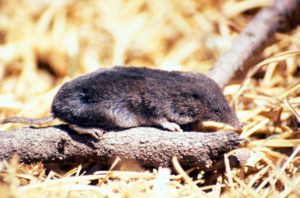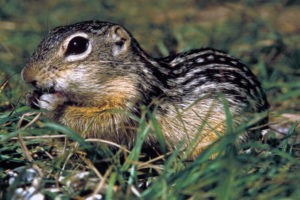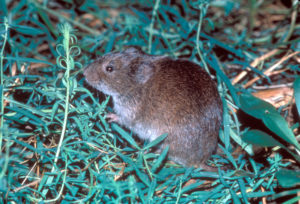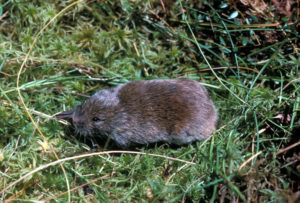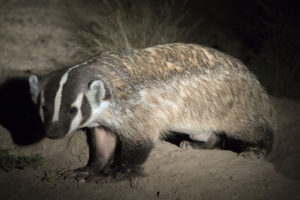Uncommon in the Commonwealth, this, too, is a shrew with a short tail. It can be distinguished from the short-tailed shrew (Blarina) by its much smaller body and brown color. The short-tailed shrew is slate gray.
Grasslands
Thirteen-lined Ground Squirrel (Ictidomys tridecemlineatus)
Not native to Pennsylvania, this species was introduced when a pair escaped from captivity in 1919 around Polk, Venango County. By the time of the Pennsylvania Mammal Survey (1947–1952), scattered colonies existed in western Venango and northeastern Mercer counties. They were not known to have crossed any rivers, therefore distribution seems to be bounded on the north by French Creek, the south by Sandy Creek, and the east by the Allegheny River.
Meadow Vole (Microtus pennsylvanicus)
One of the most abundant and widespread mammals in the Commonwealth, it serves as prey for carnivores as tiny as the least weasel and as large as the black bear.
Southern Bog Lemming (Synaptomys cooperi)
Although this mammal looks similar to several of the voles that occur in the Commonweath, it can be distinguished by its grooved upper incisors, extremely short tail, and grizzled, gray-brown fur.
Badger (Taxidea taxus)
Since 1946, there are four records of the badger in Pennsylvania, all in counties of southwestern Pennsylvania adjacent to more uniformly suitable habitat in Ohio.

